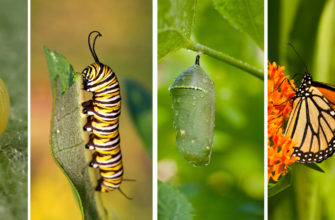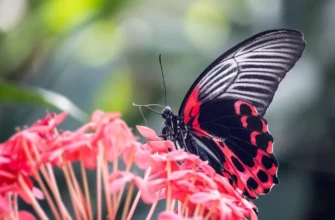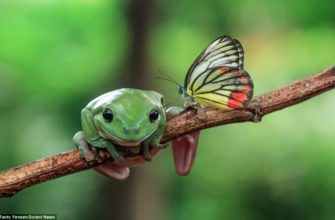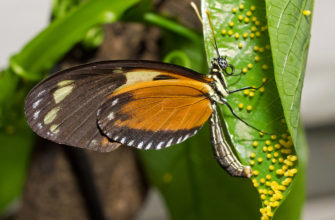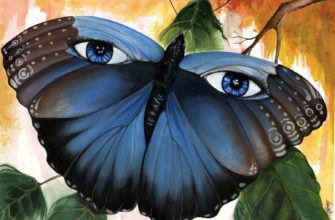Butterflies and their behavior have always fascinated people worldwide. Many have wondered whether butterflies bite or not. The answer is yes, many butterfly species are capable of biting, but they rarely do so. Butterflies’ mouthparts are not designed to pierce skin and consume blood; they commonly feed on nectar, plant sap, and rotting fruits.
Even though butterflies are unlikely to hurt humans with their bites, it’s crucial to note that some caterpillars can be harmful and cause skin irritation or allergic reactions. It is advisable to avoid handling these aggressive caterpillars as they can produce toxic substances for self-defense.
In addition, planting specific types of flowers attracts butterflies that reduce the presence of pests in your garden. This promotes biodiversity while also naturally protecting your plants from damage by bugs like aphids. Butterflies also aid in pollinating flowers, contributing to the growth of new plants.
Sorry to burst your bubble, but no, butterflies do not have teeth and they certainly don’t use them to bite.
Common Butterfly Myths
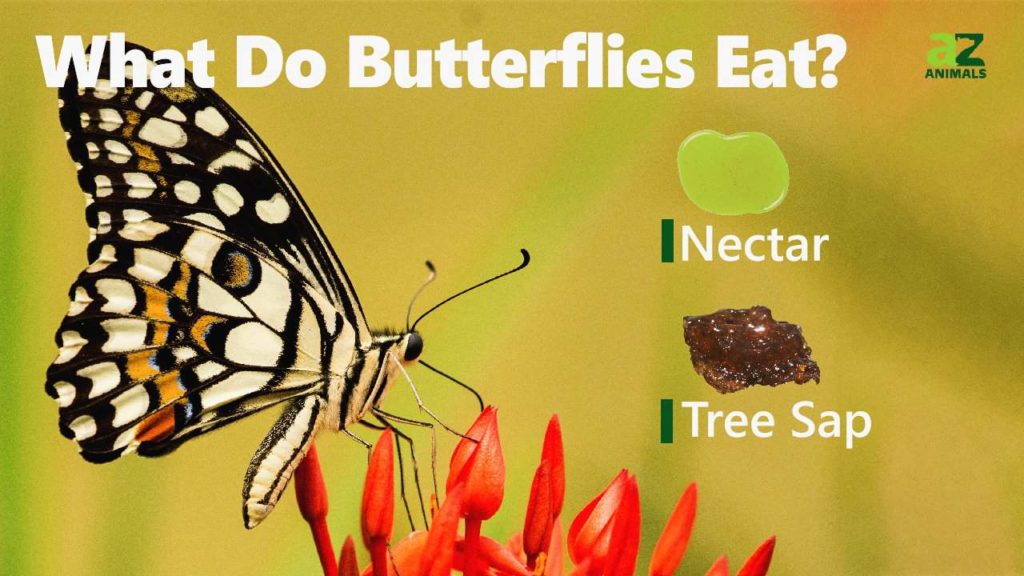
Even though butterflies are among the most studied insects in the world, common Butterfly myths still persist. One such myth is whether butterflies bite. Butterflies do not bite or sting humans as they are not harmful to humans. Their proboscis, which they use for sipping nectar, cannot cause any damage to human skin.
Another Butterfly myth revolves around their color. People believe that butterflies are always brightly colored, but that’s not always the case. Some species of butterflies are less colorful and have duller shades of brown and gray to camouflage themselves from predators.
Did you know that butterfly wings are not just for show? They are mostly used for protection and thermal regulation. Recent studies show that the wings also play a role in aerodynamics by reducing wind resistance during flight.
According to “National Geographic,” some butterfly species can migrate for thousands of miles. For example, the monarch butterfly can travel up to 3000 miles from Canada to Mexico.
Just because they don’t have teeth doesn’t mean they won’t give you a winged slap across the face.
Myth: Butterflies are harmless creatures
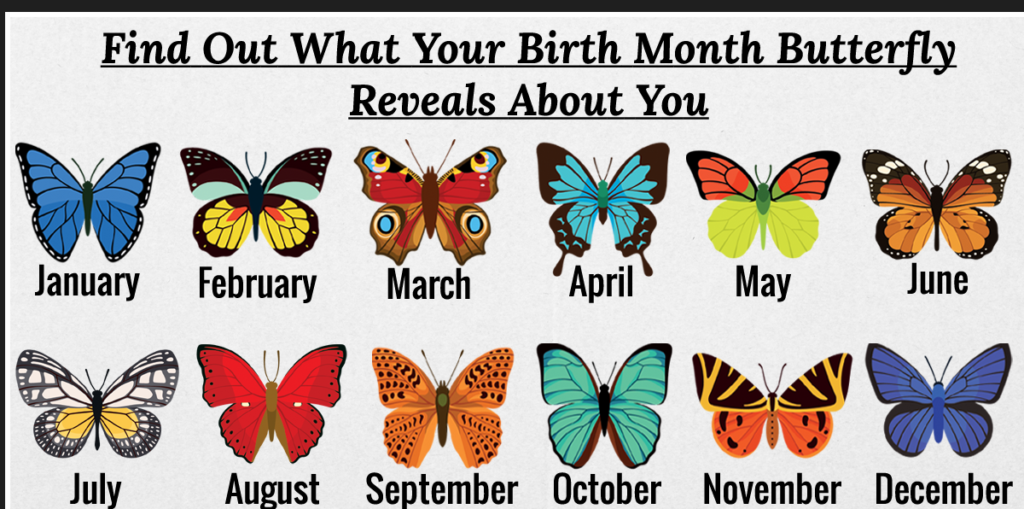
Butterflies may seem like harmless creatures, but this is a common myth. While they may not bite or sting humans, their wings and bodies are covered in tiny scales that can be harmful to some individuals. Some people are allergic to butterfly scales, which can cause skin irritation or respiratory problems. Additionally, butterflies have been known to damage crops and gardens by feeding on certain plants.
It is also important to note that not all butterfly species are the same. Some butterflies are brightly colored as a warning sign to predators that they are poisonous or toxic. These species should be handled with caution as they may release harmful toxins when disturbed.
One possible consequence of interacting with butterflies can happen in 2019 when an Indian tourist was arrested for injuring a butterfly while taking photos at a Malaysian nature reserve. Butterfly enthusiasts should always prioritize the safety and well-being of the creatures they observe.
Butterflies may seem innocent, but don’t underestimate their biting abilities – these delicate creatures have a dark side.
Reality: Some butterfly species do bite
Although commonly assumed that butterflies are harmless, it is important to note that some species do have the ability to bite. This common butterfly myth does not hold true for all the species.
Furthermore, the biting mechanism of these butterflies varies greatly among different species. For instance, some species have mandibles, which are modified jaws used in biting and chewing food. Whereas others have a proboscis-like organ called proboscis muscles that can deliver a painful nip when provoked.
It is imperative to emphasize that not all butterfly bites are harmful or poisonous. The severity of the bite depends on various factors such as wing patterns, host plant preferences, size, and habitat.
So if you happen to encounter these species, do not panic. Instead, stay calm and avoid provoking them by touching their wings or threatening their habitat. In case of any biting incidents, simply clean the area with soap and water and apply an antiseptic cream to prevent any infections.
By being aware of this reality, we can enjoy these beautiful creatures while also ensuring our safety around them.
Why go skydiving when you can feel the adrenaline rush of a butterfly bite?
Types of Butterflies that Bite
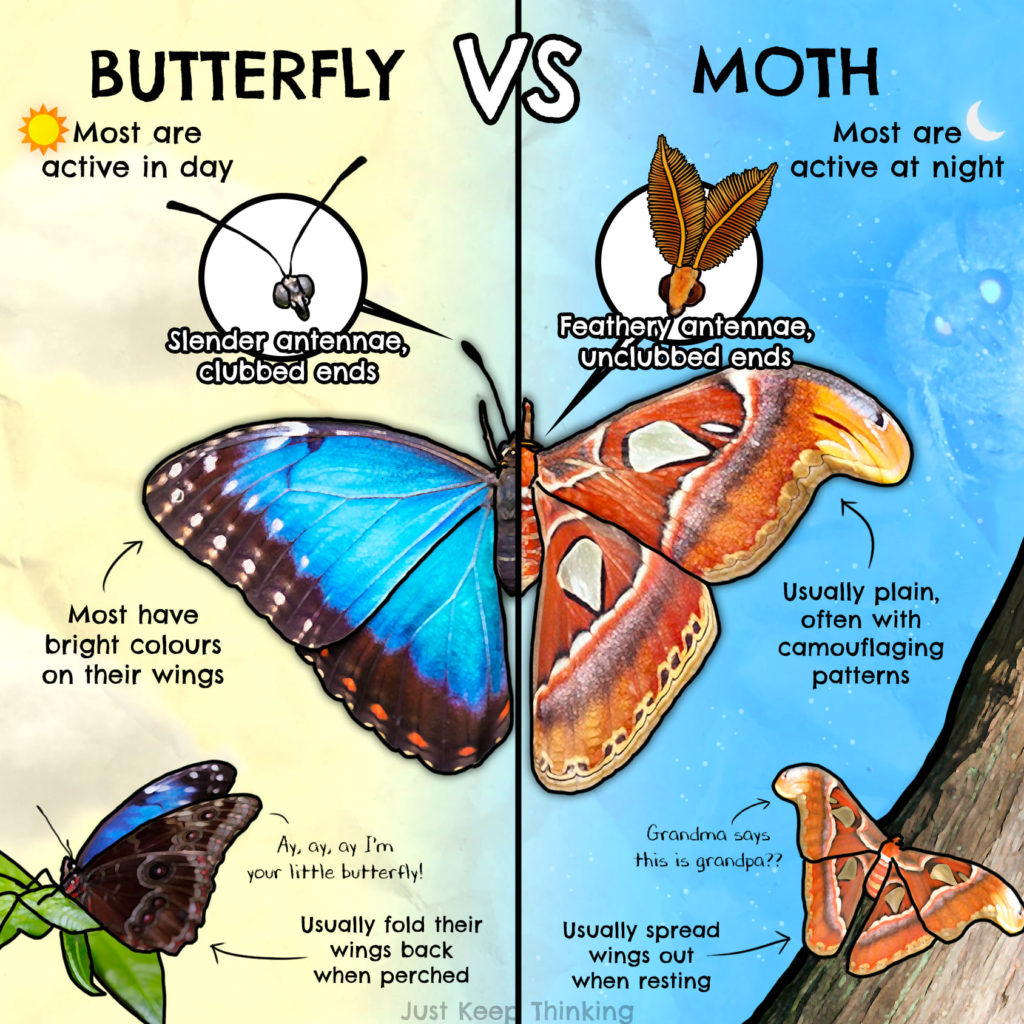
Butterflies are usually peaceful creatures, but have you ever wondered if some of them can bite humans? In this article, we will explore the world of butterfly bites and discuss the species that are known to have this tendency.
There are few species of butterflies that are known to bite humans. These include the Red Admiral, the Eastern Comma, and the Question Mark butterfly. These species have unique adaptations to their mouthparts that allow them to bite, but they only do so when they feel threatened or provoked.
- Red Admiral – This species has needle-like mouthparts that it can use to inflict a sharp nip.
- Eastern Comma – This butterfly has modified mandibles that it can use to deliver a bite.
- Question Mark butterfly – This species has a curved proboscis that it can use to deliver a bite.
It’s important to note that these butterfly bites are not harmful to humans and are usually not something to be concerned about. However, it is still best to avoid provoking any butterfly and to treat them with respect. In some cases, butterfly bites may be a sign that the insect is feeling stressed or threatened in its environment.
Pro Tip: If you encounter a butterfly that seems agitated or is exhibiting aggressive behavior, it’s best to give it some space and allow it to calm down before approaching it again.
Why worry about skippers when you can have a butterfly kiss and a mosquito bite at the same time?
Skippers
These butterflies, commonly known as “Hesperiidae”, are classified as skippers due to their fast and erratic flight pattern. They are mainly found in tropical and subtropical regions around the world. With over 3500 species, they are considered the largest family of butterflies, but only a few have been known to bite humans.
Skippers have short antennae with rounded tips that curve slightly upwards at the end. They also have stockier bodies with broader wings than other butterfly families. Their wings are usually brown or gray with little to no patterns on them.
Unique to skippers is their distinctive “club” on each hindwing, which covers their scent glands. When threatened, they can release a pungent smell that deters predators. Skippers also prefer habitats with plenty of tall grasses and weeds instead of flowers, which serve as food sources for other types of butterflies.
According to entomologist Dr. Fred Proctor, skippers have “chewing mouthparts” instead of a proboscis like other butterflies, which enables them to bite human skin if provoked or handled carelessly.
True Fact: The Zabulon Skipper (Poanes zabulon) is a common North American species distinguished by its bright orange body and black wing tips. (Source: National Wildlife Federation)
Why settle for a blue or copper butterfly when you can have a biting one?
Blues and Coppers

Butterflies with Nipping Tendencies
Blues and Coppers are two types of beautiful butterflies that can take on an aggressive disposition. Here’s what to know about them:
- Blues: With their bright blue hues, Blues may appear like gentle creatures. However, they bite humans and other animals using their mandibles if they got agitated or mishandled.
- Coppers: Coppers are often mistaken for moths due to their muted colorations. What many people don’t realize is that some species of Coppers have been known to nip people when touched or provoked.
- Behavior: Both Blues and Coppers are highly territorial and will defend their spaces against perceived threats. If you encounter one in the wild, it’s best to give them plenty of space and avoid handling them altogether.
- Habitat: These butterflies can be found all over the world. Blues are more commonly seen in North America, while many Copper subspecies prefer grassy areas across Europe, Africa, Asia and Oceania.
Apart from these points mentioned earlier, it’s worth noting that not all blues or coppers have nipping tendencies – certain factors like poor nutrition or stressful environmental conditions could incite aggression.
It is said that the first ever scientific description for a blue butterfly came from renowned naturalist Carl Linnaeus himself back in 1758. Because blue pigments in nature are quite rare, seeing a Blue butterfly was quite special for enthusiasts in those days.
In summary, while Blues and Coppers may seem benign at first sight – it’s best to keep your distance just to be safe! If you’re feeling adventurous, try getting a ‘kiss’ from a Swallowtail butterfly – just be prepared for a painful, itchy surprise.
Swallowtails
Here is an informative table that details the different types of swallowtails:
| Species | Habitat | Physical Characteristics |
|---|---|---|
| Black Swallowtail | North America | Wingspan: 2.5-4 inches; black wings with yellow markings |
| Giant Swallowtail | Southeastern U.S. | Wingspan: 4-6 inches; black wings with yellow markings and blue spots |
| Spicebush Swallowtail | Eastern U.S. | Wingspan: 3-4 inches; greenish-black wings with cream-colored markings |
It’s interesting to note that some swallowtail species mimic the appearance of toxic or poisonous butterflies as a defense mechanism against predators.
If you happen to encounter these beautiful but potentially biting creatures, it’s important to exercise caution and give them space. Keep in mind that like any animal, they may feel threatened if approached too closely or handled roughly.
Don’t miss out on witnessing the fascinating diversity of butterfly species in their natural habitats, but always remember to respect their boundaries and enjoy them from a safe distance.
Why do butterflies bite? It’s their way of saying ‘I’m beautiful, but don’t mess with me‘.
Reasons Why Butterflies Bite
Butterflies are often perceived as harmless and gentle creatures that simply flutter around. However, there are times when the question of “Do Butterflies Bite” arises. The answer is yes, butterflies do bite, but it’s important to note that they do not bite humans intentionally. Their bites are usually a defense mechanism or as a way to protect their territory. Despite their small size, some butterfly bites can be surprisingly painful.
Interestingly, butterfly bites are not always the same. Some butterflies have more potent bites than others, depending on their species. For example, the Heliconius butterflies have been found to have stronger bites than others. Additionally, the male butterflies are usually the ones with the biting behavior. They often use their sharp jaws to fight each other for a mate or over territory.
One unique aspect of butterfly bites is that they do not actually have teeth. Instead, their mouthparts are formed in a way that allows them to break down flowers for nectar. When they bite, it is more of a pinch with their mandibles. There are usually no lasting effects from a butterfly bite, as they do not transmit diseases or venom.
While butterfly bites may seem like a trivial topic, they have actually played a role in history. In the 1800s, butterfly collectors would capture male butterflies and pin them in display cases. This led to the discovery of specific species of butterflies that had previously gone unnoticed. However, this method also led to the demise of many butterfly populations and is now condemned by conservationists.
“Who needs pepper spray when you can release a cloud of butterfly scales that irritates your attacker’s eyes?”
Defense Mechanism
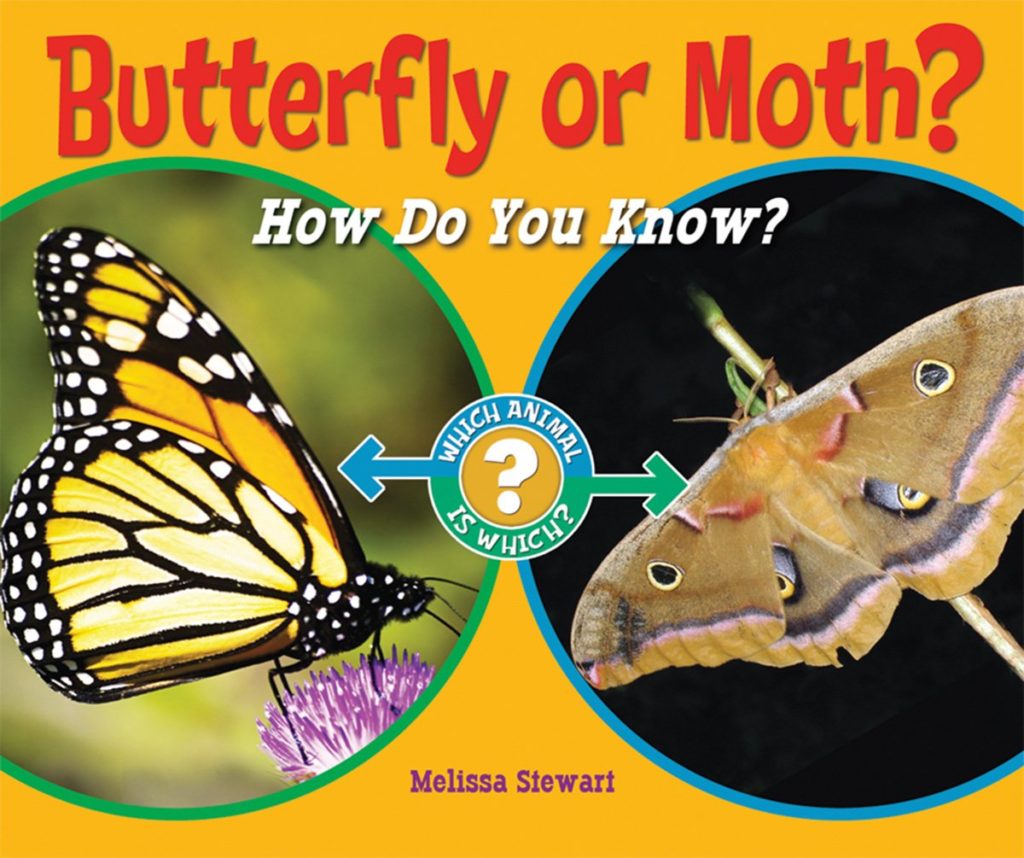
As a survival strategy, butterflies have developed a unique defense mechanism to protect themselves from predators. This mechanism involves biting and is also known as “chemical warfare”. Through this mechanism, butterflies release toxic chemicals in the form of saliva that can be harmful to their predators.
The primary reason why butterflies bite is for self-defense. These insects use their biting ability to deter potential predators from attacking them. When threatened, the butterfly will open its wings quickly to reveal its vivid colors and distinctive pattern. At the same time, it will release toxic chemical substances that irritate or harm the predator. This response not only scares away the predator but also serves as a warning for future attacks.
Another reason why butterflies bite is to protect their territory. Butterflies are territorial creatures that fiercely defend their living spaces from other members of their species and intruders of any species. Whenever they sense an encroachment on their space, they engage in a biting behavior to ward off unwanted visitors.
Butterflies biting may seem unusual as these insects are generally associated with beauty and grace rather than aggressiveness. However, it’s essential to understand that every living organism has evolved with some form of defense mechanism to survive in their environment.
They say love hurts, but for butterflies, it’s more like love bites – and not in a good way.
Mating Behavior
The courtship ritual of certain butterfly species is fascinating, involving various behaviors such as aerial displays and pheromone releases to attract a mate. During this process, males sometimes resort to biting females, which can be seen as aggressive behavior. However, it is actually a means of stimulating the female butterflies to mate.
Butterflies do not have any specific mating organs; instead, they use their abdomens to exchange sperm during reproduction. This process requires both butterflies to cooperate in staying still long enough for the transfer to occur. Male butterflies bite the edges of the female’s wings or body during copulation, which helps them stay attached while transferring their sperm. Additionally, some species of male butterflies feed on their partner’s tears to ingest vital minerals and salts that they cannot obtain from flowers alone.
Interestingly, one particular species of butterfly, known as Heliconius heurippa also bites each other’s wings while courting. This behavior establishes dominance and prevents rival males from approaching its mate.
According to historical records, Carl Linnaeus (the father of modern taxonomy) was the first person to describe this behavior in detail back in 1758 when he documented seeing two Heliconius butterflies engaged in a ‘knocking dance.’ Since then, researchers have been studying this unique courting ritual ever since.
Butterflies may look innocent, but their feeding habits could put the bloodthirsty vampires to shame.
Feeding Habits
Butterfly Feeding Patterns
Insects have diverse feeding patterns, and butterflies are no exception. Their feeding habits revolve around their life cycle, natural habitat, physical structure, and instincts. Understanding butterfly feeding is essential as it can provide insight into their behaviour and aid in their conservation efforts.
A table showcasing the feeding patterns of various butterfly species is presented below:
| Butterfly Species | Feeding Pattern |
|---|---|
| Monarch | Milkweed plants’ nectar and pollen |
| Swallowtail | Trees like oak, cherry, and hawthorn |
| Painted Lady | Thistles and nettles |
| Buckeye | Urine, dung |
The Monarch butterflies’ larvae feed on milkweed plants to extract toxins called cardenolides that earn them protection from predators. The Swallowtail species prefer to feed on the leaves of deciduous trees that contain essential nutrients required for metamorphosis. Painted Lady’s feeding preference favors plant species that contain iridoid glycosides responsible for their ability to protect caterpillars from parasitic wasps. Buckeyes have developed a taste for urine and dung because they constitute sources of salt essential for reproduction.
Notably, some butterfly species dent flesh due to high concentration and the sharpness of their proboscis. For instance, Greta oto feeds on animal fluids such as tears resulting in their biting or piercing nature.
Some suggest using fruit juices or fermenting banana peels as bait to attract butterflies without risking harm caused by pesticides.
Understanding butterfly feeding habits contributes significantly to their survival rates. It is crucial to cultivate habitats that favor specific plant species in which these species can thrive while taking measures to mitigate against human activities impacting vital food sources in their habitat.
Better stock up on bug spray and body armor, because these butterflies bite harder than a hangry toddler.
How to Avoid Butterfly Bites
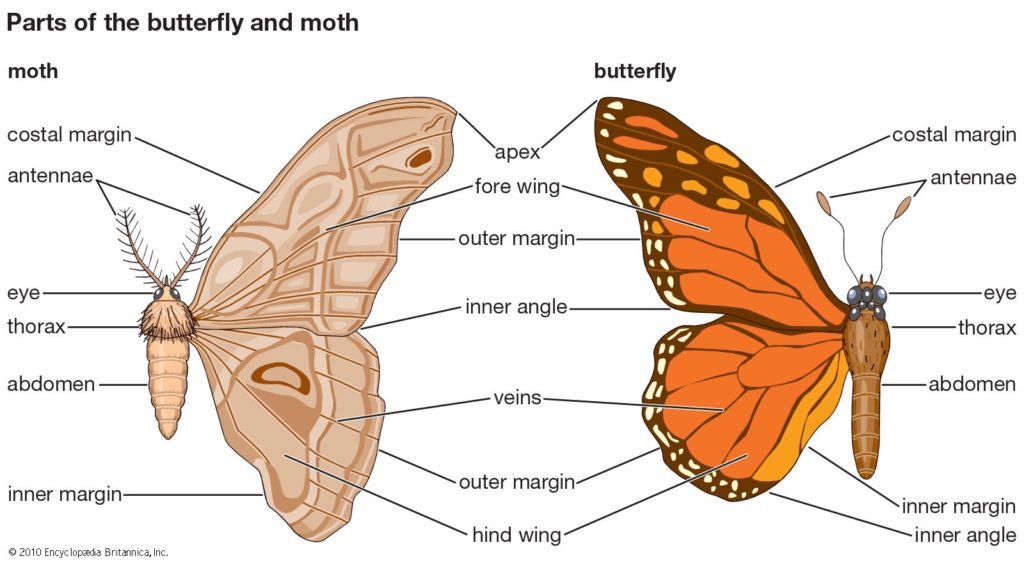
To prevent butterfly bites, practice safety measures.
These include:
- Wear protective clothing and avoid bright colors.
- Do not disturb their habitat or handle them roughly.
- Stay away from flowering plants, as they attract butterflies.
- If a butterfly lands on you, remain still until it departs.
In addition to physical precautions, avoiding scented lotions and perfumes can also deter butterflies. Using butterfly nets can be harmful and should be avoided.
Keep in mind that butterflies are an essential part of the ecosystem and handle them with care. Unless you want to feel the wrath of a butterfly on a rampage, it’s probably best to keep your distance and avoid any provocation.
Avoid Provoking Butterflies
To prevent triggering butterflies and getting bitten, it is crucial to stay still and avoid making sudden movements. Fluttering your arms or hands may seem like a fun game, but it can provoke and irritate butterflies. It is also advisable to refrain from wearing bright colours or perfumes since these can attract them. Lastly, always remember to give butterflies their space and respect their environment, especially in nature reserves.
As harmless as they may seem, butterfly bites are never pleasant. When provoked or agitated, butterflies may bite as a form of self-defence. While butterfly bites usually cause minor irritation, it’s important not to scratch or aggravate the affected area since this may worsen the swelling. Instead, wash the area with antiseptic soap and use calamine lotion or hydrocortisone cream to relieve discomfort.
One lesser-known fact about butterfly bites is that some species carry parasites that can infect humans. For instance, caterpillars such as the Buck Moth carry venomous spines that can sting and cause severe reactions in some individuals. Therefore, it’s best to avoid touching any type of caterpillar or cocoon entirely.
Lastly, there have been accounts of people becoming ill after ingesting parts of a Butterfly’s wing under rare circumstances. While this occurrence is exceptional taking precautions while handling delicate creatures like these are imperative for both our safety and theirs.
Caution: Butterflies may be beautiful, but they’re also ninja-level biters in disguise.
Use Caution in Butterfly Gardens
To ensure safety in butterfly gardens, it is important to exercise caution. These gardens can be a potential source of bites and stings from various insects.
One effective way to avoid butterfly bites is by wearing protective clothing such as long-sleeved shirts and pants made of thick material. This will help to reduce the amount of exposed skin while in the garden.
Additionally, it is recommended to use insect repellents that contain DEET or picaridin on all exposed areas of the body.
However, it is important to note that some butterflies are attracted to sweet-smelling fragrances like lotions and perfumes; therefore, it’s best practice to avoid using them while visiting butterfly gardens.
As fascinating as butterflies may be, one must not forget their potential danger. Reports have shown instances where people have experienced allergic reactions and other hazards from visiting butterfly gardens without taking proper safety measures.
Remember, avoiding butterfly bites may not guarantee happiness, but it certainly eliminates the hassle of scratching.
Conclusion
Butterflies do not bite, but they have a proboscis used for feeding. The proboscis is like a straw that sips nectar and other liquids. As social creatures, butterflies use different methods for self-defense that include camouflage and chemical signaling. One such method is the toxic chemicals released by caterpillars or adult butterflies when threatened, which can make them unappetizing to predators.
Pro Tip: Avoid touching or handling butterflies as it may damage their fragile wings and cause harm to them.




